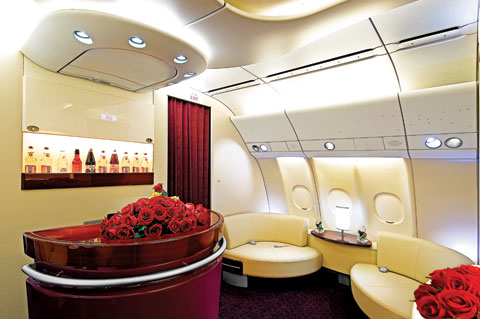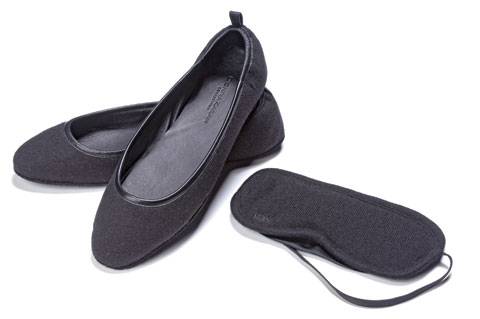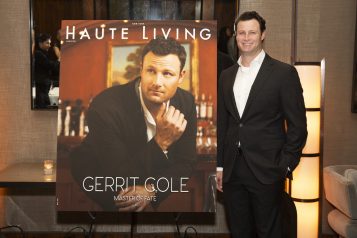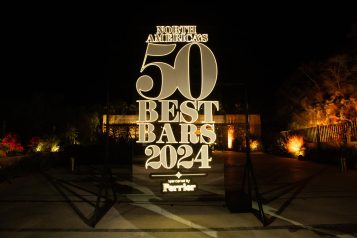Cathay, Emirates, and British Airways all offer seats that are transformed to suites by the use of sliding panels, creating a private enclave for each individual flyer.
Over the past two decades, as air travel becomes as ubiquitous as car travel and demands reach record highs, airlines have been forced to find new ways to keep their edge over the competition. The past 10 years, we have witnessed a continually rising standard, however more recently, it has been the business-class only airlines like Eos-who have revolutionized individual pods and lie-flat seats from a marketing perspective-that have pushed commercial all-class airlines to up the ante.
First-class and business-class passengers now expect lie-flat seats; they can choose between Dom Pérignon and Krug Champagne (Jet Airways), order meals prepared fresh (Cathay), and have in-flight beauty treatments (Virgin Atlantic). However, the newest trend in flying is to create a whole lifestyle experience that meets or exceeds the standards of today’s discerning travelers. To achieve this, airlines are finding innovative designers and consultants to give a face-lift to their brand’s flying experience.
When Dallas airline Braniff sent its reputation and revenues soaring with its stylish Pucci-designed uniforms in 1965, it marked a new era in flying, one where airlines began to brand themselves as lifestyle companies. Braniff opened the door for designers like Ralph Lauren, Bill Blass, Nina Ricci, Pierre Cardin, and Halston to design uniforms for various airlines in the three subsequent decades. But over the last 20 years, with airplanes becoming more and more advanced (think Boeing’s 787 Dreamliner and the next generation 737), emphasis on the interior design of airplanes has molded the current and future era of flying. Airlines like Qantas-who had 2006 Designer of the Year Marc Newson revamp their cabins and lounges and create accoutrements like carpet and seating-are tapping into celebrity designers and design firms to further improve their product.
Indian carrier Jet Airways hired London-based design firm Priestman Goode to create their recently launched first-class and business-class cabins. Priestman Goode has worked with other aircraft manufacturers and airlines like Airbus, Lufthansa, and Virgin Atlantic, and they are known for creating multiple modules that fit together like giant pieces of Lego. With Priestman Goode’s project for Brazilian executive jet manufacturer Embraer (whose private jets are priced at around $100 million), buyers can choose the layout of the aircrafts’ interiors as well as the number and configuration of bedrooms and public spaces. Because these modules are pre-certified, the system is not only a less expensive way to approach design, but a more efficient and speedy way as well. Though aesthetics (minimal white interior landscapes are the predominant choice for airlines, it seems) are important, companies like Priestman Goode are more concerned with the flyers’ overall experience and how the space is used rather than with ornate design detail including elements like tableware and linens. “[Planes are] like caravans; very detailed and expensive caravans. We’ve tried to integrate things and make it feel much more modern,” says Paul Priestman, director of Priestman Goode.
Qatar Airways’ A340-600 aircrafts, launched less than two years ago, are not only capable of flying up to 14 hours non-stop with a full load of passengers and cargo, but Qatar rose the bar even higher by offering a first-class lounge that features a stand-up bar with drink rack, spotlight mood lighting, leather sofas that can seat up to six passengers, and electronically operated window shades. On both their A340-600 and A330 planes, business-class travelers have 160-degree recliner seats with a slew of controls to dictate independent lumbar support as well as a foot massage bar. Cathay, Emirates, and British Airways all offer seats that are transformed to suites by the use of sliding panels, creating a private enclave for each individual flyer.
For those who opt for private air travel, interior design firms have met clients’ demands to step it up by teaming up with creative luminaries to make their clients’ flying experiences more luxurious. Last year, Versace S.p.A, and TAG Aircraft Interiors Limited announced their collaboration on an interior design project for an Airbus A319 Corporate Jet, one of the largest private aircrafts available. The private plane will be ready for use by one of their European clients this year. The A319 has 16 seats in an exclusive four-compartment arrangement: salon, galley, business office, and stateroom with en suite bathroom.
Nowadays, what airline you fly largely reflects your type of lifestyle. Like Apple Computer marketing their Mac brand to customers with a particular image-artists, creative industries, and hipsters-airlines are targeting a certain type of flyer vis-à-vis the design partnerships they develop. So what happens next? Perhaps a Michelin Star-rated restaurant by air or a pop-up boutique 30,000 feet above ground? We’ve learned to never say never.





















